Let’s face it, quiche can be a culinary minefield.
One wrong move and you’re staring down a soggy-bottomed, curdled-egg disaster. But fear not, fellow foodies! We’re here to banish bland and elevate your quiche game from “meh” to “magnifique!”
1. The Secret Of The Crust

Crusts are like your favorite pair of jeans: they need to fit just right. Start with cold butter and a dash of vinegar to get that flakiness.
Bake it blind before adding the filling, because nobody likes a soggy bottom. This is your quiche’s foundation. A weak crust is like a house built on sand.
2. Eggs: The Stars Of The Show

The courageous stars of quiche, holding everything together like a culinary superglue. Use fresh, high-quality eggs.
Whisk until smooth, because lumpy eggs are as welcome as a rock in your shoe. Balance is key: too many eggs, and your quiche is rubbery; too few, and it falls apart.
3. Cream Or Milk?

Fat is flavor’s best friend, and when it comes to quiche, cream is your ally. If you’re looking for a lighter option, milk can be the understudy, but cream always steals the show.
Consider the texture: cream gives a richness that’s as smooth as a jazz saxophone.
4. The Art Of Cheese

Cheese isn’t just an add-in; it’s the life of the party. Think of Gruyère, with its nutty sophistication, or cheddar, bringing bold personality to the stage.
Parmesan whispers elegance, adding depth like shadows in a painting. Grate freshly, and don’t skimp—it’s a cheese lover’s paradise.
5. Sautéing Vegetables
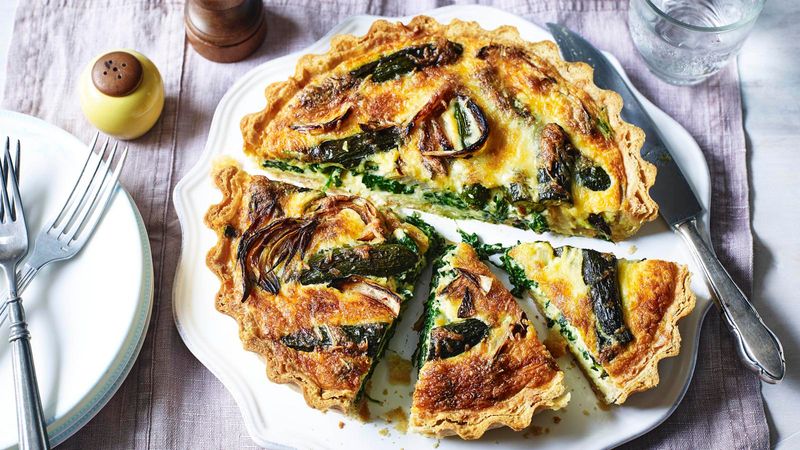
Vegetables need a little love before they join the quiche party. Sauté them first to bring out their sweetness, because raw veggies are like uninvited guests—they just don’t fit in.
Think of caramelized onions or roasted peppers, each adding layers of flavor like a culinary symphony.
6. Meat: Yay Or Nay?

Meat in quiche is a personal choice, as divisive as pineapple on pizza. Bacon brings a smoky, crispy element that dances on your palate, while ham offers a tender, savory depth.
Vegetarians might skip it, letting mushrooms or spinach steal the spotlight. The key is balance; meat should complement, not overpower.
7. Herbs: The Unsung Heroes

Herbs sprinkle magic over your quiche like fairy dust. Thyme and rosemary lend an aromatic elegance, while parsley offers freshness like a spring morning.
Chop them finely, and add sparingly, for herbs are potent. They enhance without overshadowing, lifting flavors like a gentle breeze lifts sails.
8. Temperature Matters

Temperature is the silent conductor in the orchestra of baking. Preheat that oven, because a cold start is like trying to sprint without warming up.
350°F is your magic number, coaxing eggs to set without curdling. Too hot, and you’ve got a quiche that’s dry as toast; too cold, and it’s a watery mess.
9. Baking Time: Patience Pays Off

Timing is everything—ask any comedian or baker. Quiche needs time to set, like a good mystery needing to unfold.
45-50 minutes is your sweet spot, but keep an eye on it like a hawk. Wiggle the pan; a slight jiggle in the center is acceptable, but liquid is a no-go. Patience is your virtue here.
10. Cooling: The Waiting Game
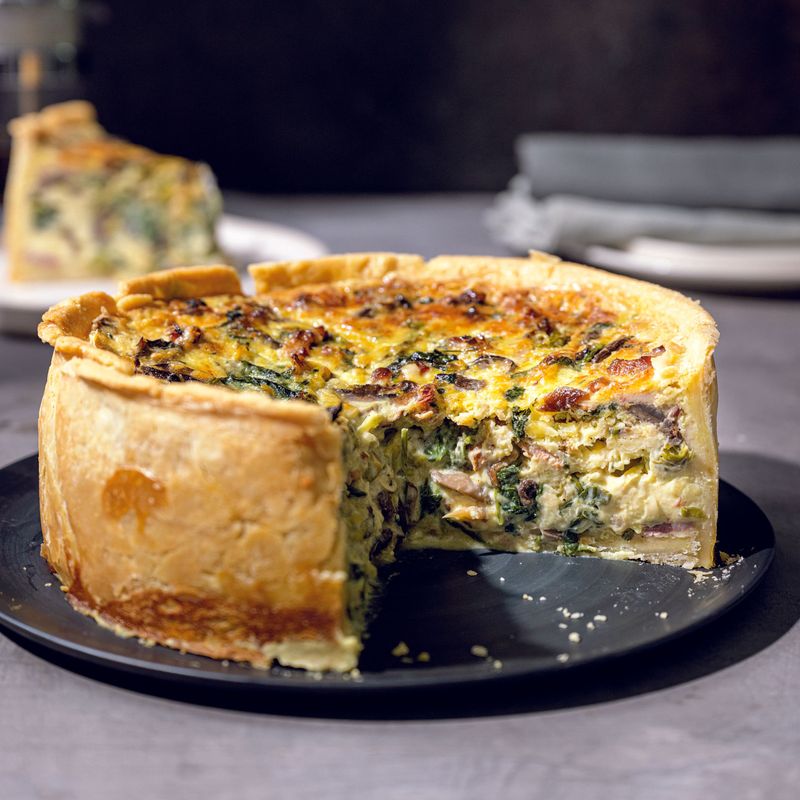
Here’s where restraint comes into play. Fresh out of the oven, quiche needs to cool, akin to a dazzling diva needing her space.
Set it on a wire rack and let it breathe. Cutting too soon releases steam, turning your masterpiece into a puddle. A good 10 minutes, and patience rewards you with slices that hold together, showcasing every layer.
11. Reheating Without Ruining

Reheating quiche is an art form, avoiding the rubbery misfortune of a microwave. An oven is your friend; wrap slices in foil and warm gently at 300°F.
This keeps the crust crisp and the filling creamy. It’s like bringing back the magic of yesterday’s dinner, only better. A quick sprinkle of cheese on top doesn’t hurt either.
12. Pairing With The Perfect Salad
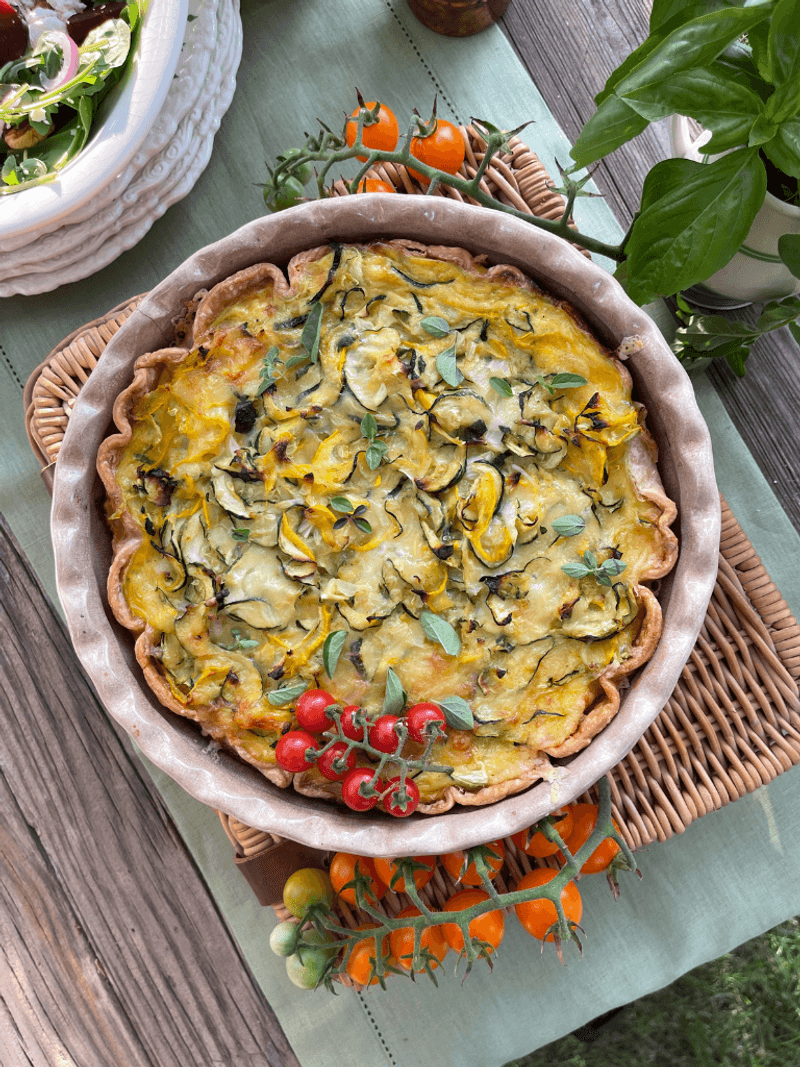
Quiche is rich, so pair it with a salad that dances on your taste buds like a refreshing breeze. Think greens with a zingy vinaigrette or a hint of citrus that cuts through the creaminess.
Add crunch with nuts or croutons, and freshness with cherry tomatoes.
13. Storing For Longevity
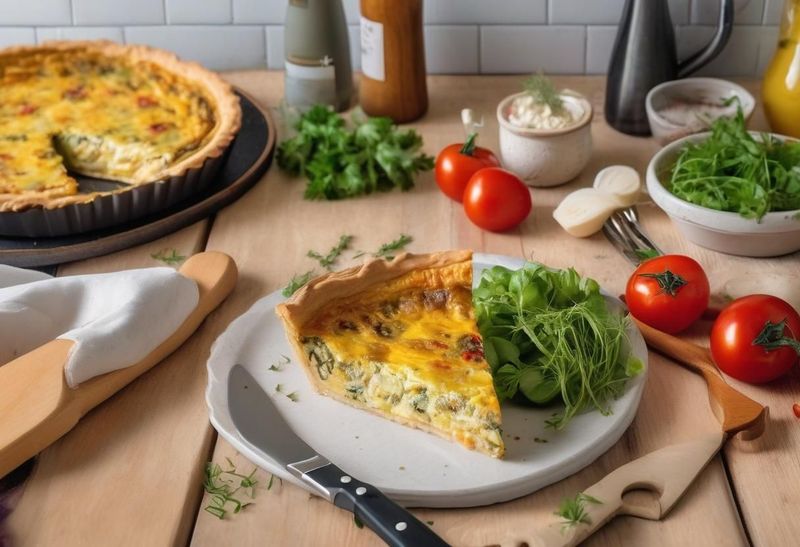
Extend your quiche’s life with proper storage techniques. Cool it completely, then wrap tightly in plastic or pop it into an airtight container.
Refrigerate, and it’s good for 3-4 days, ready to surprise you with convenience on busy mornings. It’s like having a gourmet breakfast waiting in the wings whenever you desire.
14. Freezing: Yes, You Can
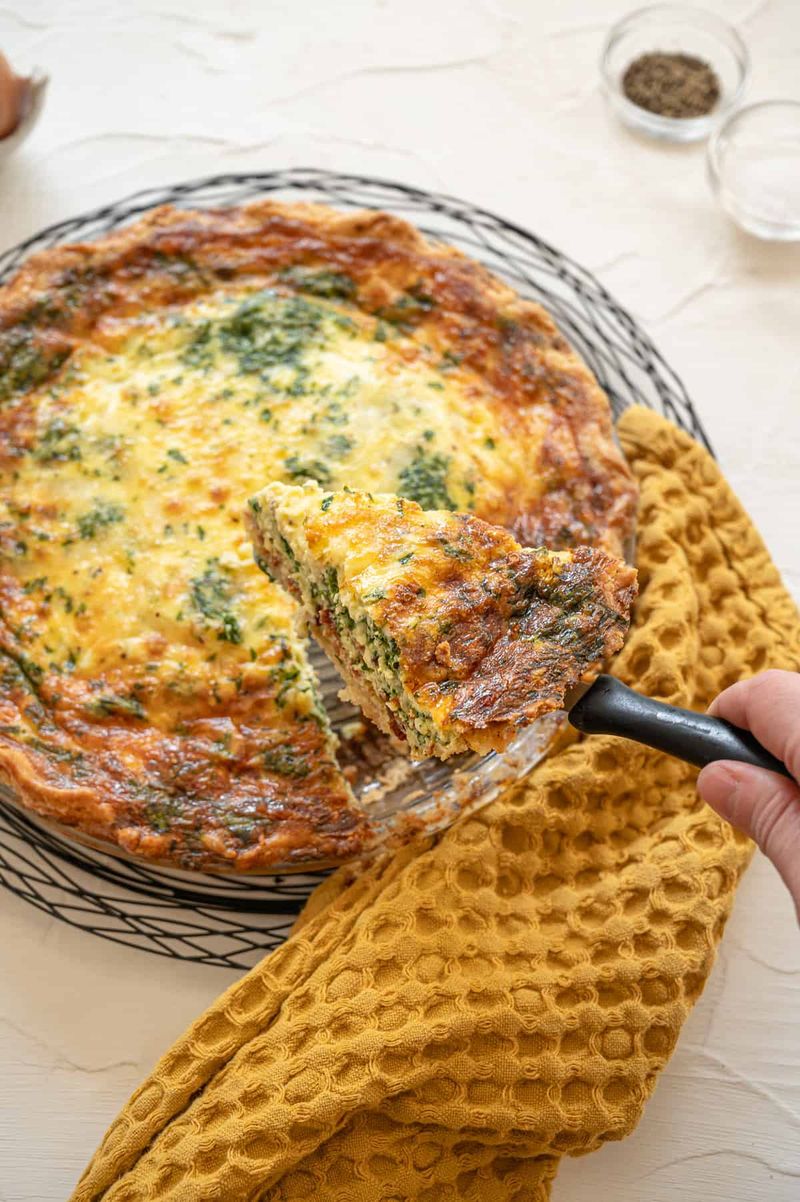
Yes, your quiche can survive the arctic chill of the freezer. Wrap tightly in plastic, then foil, and label it—future you will thank you!
Freeze for up to three months, then thaw in the fridge overnight before gently reheating. It’s like preserving a snapshot of culinary bliss, ready to thaw and thrill whenever you’re in need!
15. Using Seasonal Ingredients

Seasonal ingredients transform your quiche into a celebration of the time of year. Think spring asparagus, summer tomatoes, or autumn mushrooms, each adding its unique signature.
It’s the culinary equivalent of dressing for the occasion. Freshness is paramount, bringing out flavors that are vivid and true.
16. Experimenting With Flavors
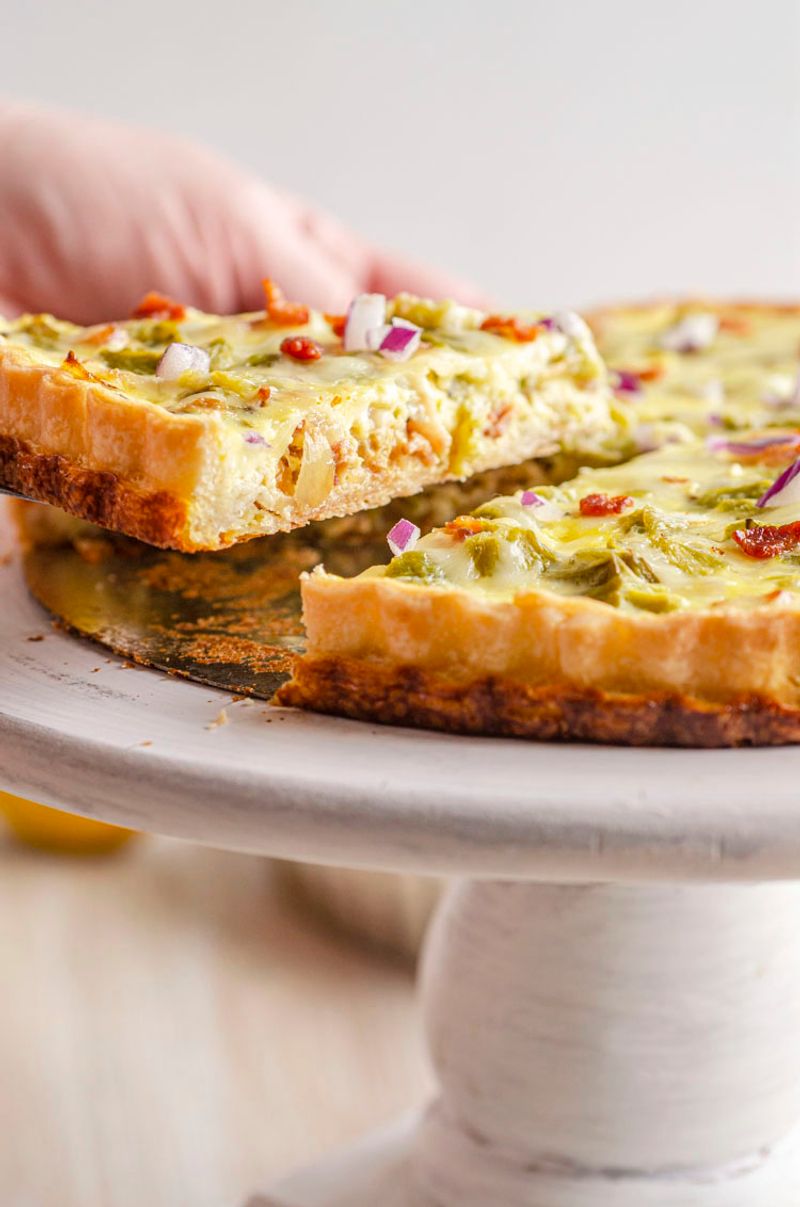
Quiche is a blank canvas, waiting for your culinary artistry. Experiment with flavors like smoked paprika, truffle oil, or even a dash of nutmeg.
It’s about daring to be different, stepping outside the quiche comfort zone. Be bold, for this is your chance to create a quiche that’s uniquely yours.
17. Presentation: You Eat With Your Eyes First
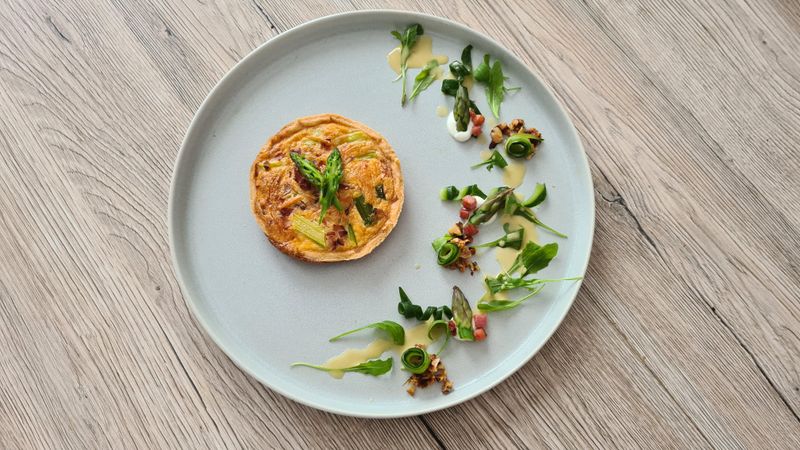
Presentation is the final flourish, the cherry on top. Garnish with a sprig of parsley or a sprinkle of chives, for we eat first with our eyes.
It’s the difference between an ordinary meal and a dining experience. Serve on a white plate to highlight the quiche’s colors, each slice a masterpiece of culinary art.

